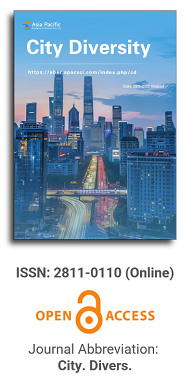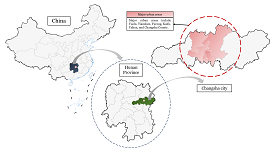
Asia Pacific Academy of Science Pte. Ltd. (APACSCI) specializes in international journal publishing. APACSCI adopts the open access publishing model and provides an important communication bridge for academic groups whose interest fields include engineering, technology, medicine, computer, mathematics, agriculture and forestry, and environment.

As China's pillar industry, the property market has suffered a considerable impact in recent years, with a decline in turnover and many developers at risk of bankruptcy. As one of the most concerned factors for stakeholders, housing prices need to be predicted more objectively and accurately to minimize decision-making errors by developers and consumers. Many prediction models in recent years have been unfriendly to consumers due to technical difficulties, high data demand, and varying factors affecting house prices in different regions. A uniform model across the country cannot capture local differences accurately, so this study compares and analyses the fitting effects of multiple machine learning models using February 2024 new building data in Changsha as an example, aiming to provide consumers with a simple and practical reference for prediction methods. The modeling exploration applies several regression techniques based on machine learning algorithms, such as Stepwise regression, Robust regression, Lasso regression, Ridge regression, Ordinary Least Squares (OLS) regression, Extreme Gradient Boosted regression (XGBoost), and Random Forest (RF) regression. These algorithms are used to construct forecasting models, and the best-performing model is selected by conducting a comparative analysis of the forecasting errors obtained between these models. The research found that machine learning is a practical approach to property price prediction, with least squares regression and Lasso regression providing relatively more convincing results.
Issue release: 31 December 2021
Based on the reality of large-scale population mobility brought about by China's urbanization, using the panel data of 268 cities in China in 2012 and 2018, this paper constructs urban cultural diversity indicators from the perspective of labor source, and studies the impact of cultural diversity on urban trade competitiveness and its mechanism Research findings: Cultural diversity and urban trade competitiveness show an inverted "U" relationship The impact of cultural diversity on the trade competitiveness of different cities is different. The administrative level of the city and whether the city is coastal will affect the effect of cultural diversity on the city's trade competitiveness Entrepreneurship is an intermediary variable between cultural diversity and urban trade competitiveness. Specifically, it affects urban trade competitiveness through two channels: entrepreneurial innovation and entrepreneurial entrepreneurship The above results have brought important enlightenment to the interpretation of the relationship between cultural diversity and urban trade competitiveness
Issue release: 31 December 2021

Prof. Mehmet Cetin
Kastamonu University,
Turkey
Polish Scientific Bibliography


 Open Access
Open Access